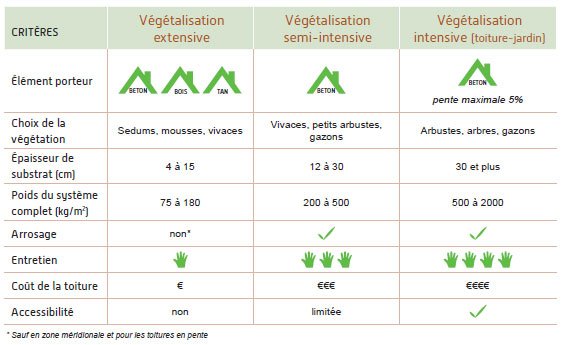Planting green roofs has numerous advantages. It promotes sustainable development and also protects both biodiversity and the environment in towns and cities.
Rainwater Management
As cities expand so do hard surfaces such as roads, rooftops and parking lots. These surfaces create artificially high rate of water runoff, which is extremely difficult for wastewater utilities to manage and results in untreated sewer overflows and rainwater runoff that pollutes local watersheds during heavy rainfall. Expanding traditional grey infrastructure capacity can be extremely expensive and often does not solve the problem.
This is why cities are turning to green infrastructure systems such as green roofs to deal with rainwater at the source, and minimize sewer overflow risk and protect water quality. Green roofs area a part of this solution.
Green roofs and other vegetated systems are able to reduce and regulate the quantity of rainwater reaching a building then drained off into the mains drainage system. Some of the rainwater is absorbed by the vegetated system (growing medium and plants) until it is saturated. The water retained in the soil is used by the plants in a process called evapotranspiration. Once the soil medium is saturated, the plant system is able to slow down the drainage of water into the rainwater drains. Green roofs absorb peak precipitation and delay runoff (“delayed effect”) this cuts down on flooded drains during violent storms, and protects the watersheds that surround cities and municipalities.
Thermal comfort
The various layers of the vegetated system (drainage, filter, growing medium and vegetation) provide an extra layer of thermal insulation on the roof thus protecting the building from cold in the winter and combating the urban heat island effect in summer. The urban heat island is the concept that the hard dense material that makes up cities absorbs vast amounts of sunlight and can cause a city to be much hotter than the surrounding area. In this way the mechanisms of evapotranspiration, shade and reflection by the plants comprising the green roof can reduce the temperature of a building during hot summers.
When many buildings adopt green roof practices, the city can reduce its overall temperature in the summer. In short, green roofs can reduce utility costs for the building owner, and make a more comfortable city for everyone who lives in it. The Canadian Ministry of the Environment conducted a study in 2004 in the city of Toronto revealed that installing 6.5 km2 of green roofs in the city would be able to:
- Lower the surrounding temperature by 1 to 2°C during the hottest periods
- Eliminate 2.18 tons of greenhouse gases (carbon) and thirty tons of pollutants every year.
Acoustic comfort
The growing medium layers and the vegetation of the plant system absorb the noise from impact (rain, hail, etc.) and reduce the volume from aerial noise, making for a much more comfortable and quite building to live and work in.
Extends the life of roofs
By protecting the waterproof membrane against thermal impact and stress (UV, indentation), green roofs help to prolong the life of roofs by as much as three times their normal useful life.
Improves the quality of life of city-dwellers
Providing real “green lungs” for the city, the green roof helps to combat pollution; plants release oxygen, absorb carbon dioxide and filter out dust suspended in the air. Bringing back nature into urban environments also integrates buildings more successfully in their environment: the city is more attractive and city dwellers are better able to enjoy their surroundings.
Encourages biodiversity
By reintegrating green spaces into the urban environment, green roofs restore ecological functions damaged by urban development. The layer of growing medium, the range of plants suited to the local climate, and shelter areas created by the micro ecosystem all encourage the return and development of plants and animals in the city.
An extensive green roof instead of a roof garden
Unlike roof gardens, which present numerous restrictions to the architect (significant weight, depth of growing medium, limited area of use, etc.) and high costs for the end customer (installation and maintenance), extensive (or semi-intensive) green roofs are much simpler and less expensive to implement.
In fact, extensive green roofs can be easily established on all load-bearing components (especially wooden load-bearing components) as the load on the roof is minimized (the vegetated system generally weighs between 50 and 150 kg/m²) and the system is not very thick (under 15 cm deep)
Maintenance costs are also minimized: the plants selected for the plant cover require neither mowing or watering (except for pitched roofs, very arid areas, and during periods of drought).
 The various techniques for green roofs
The various techniques for green roofs


